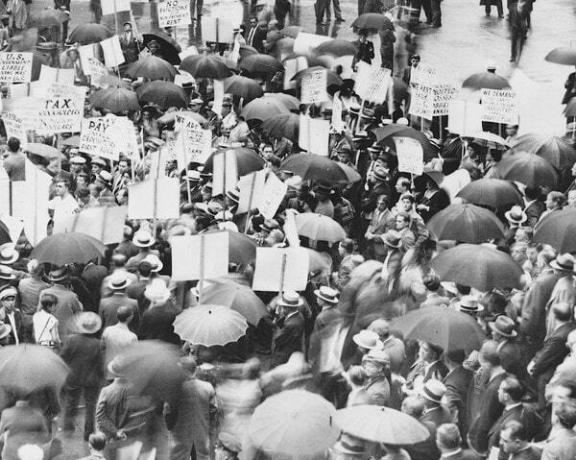It is also known as overproduction and it is understood as excess supply, that is, that situation in which more products and / or goods are produced than is demanded in the market. Due to a decrease in demand or an increase in production for which there is no demand.
Economically, there are cycles capable of generating insufficient demand, caused by increased production, the accumulation of inventories and increased unemployment, observing that the productive capacity increases while the purchasing power decreases. In simpler words, an accumulation of stocks can occur in companies, which will have to make a reduction in production, this Reduction brings reduction in employment and unemployment at the same time brings reduction in consumption, a whole vicious circle that can generate a collapse in economic.
Advertisements
A clear example of this was the 1929 economic crisis that was unleashed with the overproduction that began in 1924.
In this article you will find:
Overproduction crisis of 1929
This crisis was experienced in the United States after the First World War. By 1917 the country had entered the war, generating strong economic growth, which continued to reach its splendor in 1924.
Advertisements
The overproduction affected all economic sectors of the country, technological advancement and mechanization affected the agriculture, the decline in demand and the reorientation of supply to industry and improvements in Productive processes and the budget dependence of the state affected the service sector.
By 1925 the economy in the United States was very good, it was growing, the stage known as "The Roaring Twenties", a time of optimism where the best business was investment, the number of bank loans grew, also the stock market grew disproportionately without correspondence with economic development, thanks to the speculation of many investors. The misalignment that broke out on October 24, 1929, a day known as Black Thursday, the day the crisis begins, the most devastating decline in the stock market, considering the global reach that it had and the duration of its aftermath so it is met as the Great Depression.
Advertisements
The crisis extends to Europe, Germany and Austria are the countries that suffer the most. The consequences were colossal, some banks and industries went bankrupt, unemployment grew disproportionately and the peasants are in ruin, as far as the political consequences brings the rise of the totalitarian system.

Advertisements
How the crisis of 1929 was experienced
Banking crisis
Banks are forced to sell shares and demand payment of the credits granted, forcing investors to sell shares on the stock market further aggravating the situation, and causing the bankruptcy of the bag.
Industrial crisis
Industries could no longer enjoy bank loans and their benefits, power diminishes purchasing power of the population, falling demand so that companies went bankrupt and laid off their employees.
Advertisements
Commercial Crisis
International trade is affected as a result of the bankruptcy of many companies, United States exports sank to the point that other countries must resort to a devaluation of their currency in order to promote internal trade and lower the prices of exports.
Agricultural Crisis
Overproduction caused the loss of many crops, ruining peasant producers and causing a decrease in demand for industrial products.
Consequences of the Crisis
Economic and political
- Due to the high number of unemployment, the fall of large companies, the bankruptcy and poor condition of the banks, the state intervenes and assumes control and work in economic sectors where the private company was not willing to risk investing and to work.
- The United States implements a measure that would protect the national economy, Considered by European countries as a manifestation of trade war.
- Many governments were in need of a devaluation of their currency, this in turn caused the abandonment of the gold standard since the currencies could not maintain their equivalence with gold.
- There is a general drop in prices, however the agricultural sector noticed this drop with greater force.
Social
- Unemployment increased dramatically, and lasted for so long that a new way of life emerged.
- Crime increases.
- Dullness in population growth, lowers the birth rate.
- A social identity crisis is generated, framed as a "lost generation."
Recovery from the crisis
The recovery did not look easy, the damage was such that difficult years were predicted, the main measures against the crisis were:
In United States
- The new President Roosevelt adopts the so-called New Deal, groundbreaking legislation that set the nation's comprehensive restoration in motion.
- A pension fund, subsidies for local development and unemployment insurance are developed.
- The economy is protected by state intervention.
- The rise in prices is enhanced.
- Reform of the banking system with the participation of state capital.
- Devaluation of the dollar and reform of the stock market.
- Compensation to the agricultural sector in exchange for a reduction in harvests.
- Increase in wages, thus increasing the purchasing power of the citizen.
- Laws of Reduction of the working day.
- A public works construction program is created with the objective of generating jobs.
In Europe.
A large number of countries implemented a policy deflationary, with measures that sought to prevent capital flight and achieve a balanced budget. In some cases, it was decided to reduce or freeze wages.

